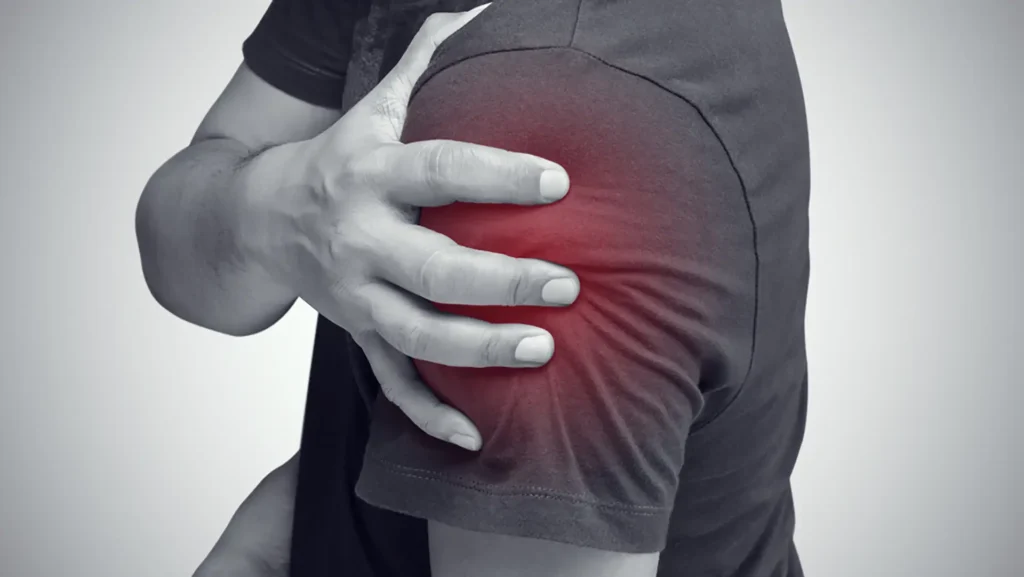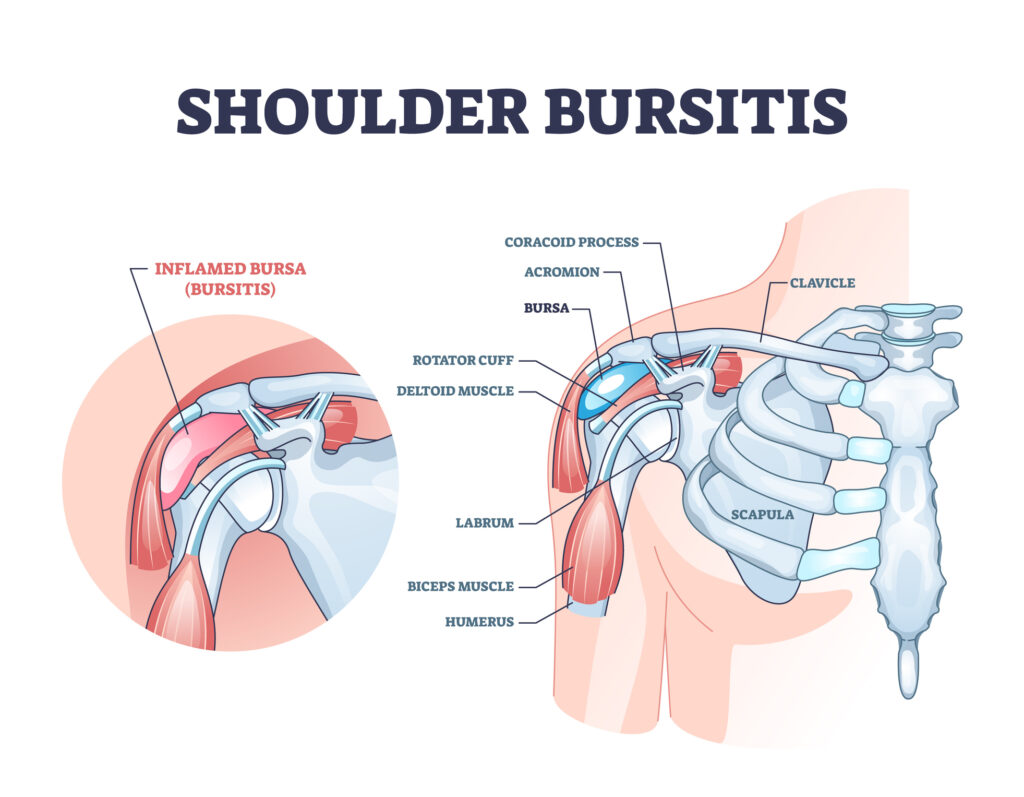
Shoulder Bursitis and Impingement
What is Shoulder Bursitis?
Shoulder bursitis is very common. The subacromial bursa is a fluid filled sac that cushions and reduces friction in the space between the rotator cuff tendons and the acromion of the shoulder blade. When you raise your arm above your head this bursa and the rotator cuff tendon can become pinched (impinged) between the humerus bone and the acromion. If done repetitively, this can cause swelling and pain within the bursa and the rotator cuff, a condition known as shoulder bursitis or impingement syndrome.

What Are the Signs of Shoulder Bursitis and Impingement?
Pain with overhead activity is the classic sign of shoulder bursitis and impingement. Patients may also experience pain when lifting objects, sleeping on the affected shoulder, or pain that begins in the shoulder and radiates partway down the arm into the deltoid muscle.
What Causes Shoulder Bursitis and Impingement?
There are many possible causes to Shoulder Bursitis and Impingement, but the classic cause is repetitive overhead activity such as painting a ceiling or sports such as tennis, swimming or volleyball. But in many cases there is no identified cause, and the symptoms come about gradually from regular wear and tear. Genetics likely play a role and anatomical variations in the shape of the shoulder or the presence of a bone spur under the acromion can lead to this problem.

What Are the Treatment Options for Shoulder Bursitis and Impingement Syndrome?
Mild cases of shoulder Bursitis and Impingement can be successfully treated with rest, anti-inflammatory medicine such as Ibuprofen or Naproxen (NSAIDs), and avoiding painful overhead activities. Sometimes, a corticosteroid injection into the inflamed bursa and physical therapy are needed for cases that are not relieved by rest or over the counter medicines.
What is Shoulder Bursitis and Impingement Surgery?
Surgery may be required for more severe cases that do not respond to the above mentioned treatments, and in particular for patients who have anatomical differences such as an acromial bone spur or a downward sloping acromion. The surgery may involve a subacromial decompression where the inflamed bursa is removed and/or an acromioplasty where the bone spurs are shaved down and the acromion is reshaped to give more space to the rotator cuff tendons and bursa. The surgeons at the Raleigh Hand to Shoulder Center can perform this procedure using arthroscopic minimally invasive surgical techniques.
Treat Your Shoulder Bursitis and Impingement – Regain Your Mobility
Shoulder bursitis and impingement can limit your shoulder’s range of motion and cause significant pain. If you have shoulder pain or feel as though you may have signs of impingement syndrome, feel free to call our office to schedule an appointment with one of our fellowship trained Raleigh orthopedic hand and upper extremity surgeons. Call our office to schedule an appoint or book a visit online today!

Updated 6/21/2025

